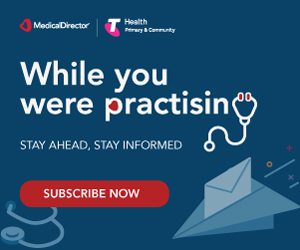Medical referral management – why are we still faxing?
Australian general practitioners send a lot of correspondence – and this is increasing. A recent study published in the Australian Journal of Medical Practice revealed that in 2014–15 alone, they made 15.9 referrals per 100 patient encounters, and sent 9.7 million more referrals than in 2005–06.
Yet despite the range of digital referral tools available to healthcare professionals, faxing, printing and sending paper-based letters is still the main method of communicating referral correspondence.
Why is there reluctance to change?
According to the report, eReferrals, why are we faxing?, the main reason that prevented healthcare professionals from embracing digital referral systems instead of paper was peer behaviour, security concerns workplace culture and simply not understanding the software, or having the right technology in place.
As a result, the report stressed how important it is to understand that software has come a long way, and encouraged healthcare professionals to revisit the usability, security and interoperability of new and easy to use systems.
Importantly, the report recommended a workplace culture of education and learning to understand the data and security consequences of maintaining secure electronic records, versus maintaining purely paper-based systems and physical paper correspondence – which could easily get lost or opened by the wrong person.
Why is a good medical referral system important?
There are a number of reasons why having a referral management system is important. The health industry is consistently scrutinised for inefficiencies, and as every year the pressure is on healthcare providers to do more with less, finding better, more streamlined ways of doing things has become more important than ever before.
Slow, inefficient referral systems can also lead to long lead times, which are inconvenient and frustrating for both patients and providers. A referral process that uses the right digital tools and software can save time, streamline communication between primary care providers, specialists and other health providers, and ultimately, optimise the patient journey and enhance both quality and continuity of care.
Other key benefits include:
- Increasing transparency
- Streamlining processes
- Reducing operational inefficiencies
- Reducing administrative burden
- Saving time for busy health professionals and practice managers
What referral tools are currently available?
A good referral system involves a secure messaging platform that enables GP’s to exchange patient information in an efficient, cost effective, reliable and secure way. This includes exchange of electronic referrals, forms, eRerrals, status updates, specialist letters and discharge summaries. In addition, it allows practitioners to complete insurance medical requests electronically and have access to relevant electronic forms.
In the last few years, more effective referral management solutions have emerged, which are integrated into MedicalDirector’s clinical and practice management software.
HealthLink
Seamlessly integrated into MedicalDirector, HealthLink is free of charge for GPs to send referrals and receive electronic reports, including radiology, pathology reports, discharge and event summaries.
HealthLink software also provides access to new generation Smart Forms, enabling the referral process to take place within your workflow while interacting with the patient during the consultation. This allows electronic referrals to be easily and instantaneously submitted to a growing list of hospitals and government agencies.
Healthshare
Healthshare is a leading Australian digital health company dedicated to improving health outcomes by building innovative products that facilitate access to information and health practitioners.
Healthshare Referrals allows you to search for private specialist and allied practitioners by location, specialty, special interests and hospital affiliations, and write a referral in one click. It is powered by complex search algorithms to ensure a robust user experience for the GP.
Healthshare’s Premium Referrals service is fast evolving the doctor-to-doctor networking space. A valued partner of MedicalDirector since 2014, Healthshare has been providing its growing network of GP users with access to a comprehensive specialist directory, integrated into the referral workflow of MedicalDirector.
Specialists promoting through HealthShare are also featured on their website, www.healthshare.com.au, which receives 500,000 monthly unique visitors, as well as the “Find a Provider” directory for private health insurers. On top of this, the solution offers additional networking opportunities, marketing avenues, thought leadership and media exposure through Healthshare’s media partners.
BPAC
BPAC offers an efficient messaging solution that enables electronic referrals to be securely sent between healthcare providers.
Referrals can be launched either from within the existing GP pathways, or directly from the GP desktop software designed to work in with the GP workflow.
The SeNT referral platform integrates into MedicalDirector software and has in-built referral managment capability. When a GP clicks on the launch button within the patient context the patient information is automatically populated into the referral form. Leaving the GP to focus on inputting specialist clinical information appropriate to the referral and specialty.
When completed, the referral is converted into a PDF for saving into the patient’s clinical record in MedicalDirector software.
For more information about how better referral management can benefit your practice, visit https://www.medicaldirector.com/marketplace









